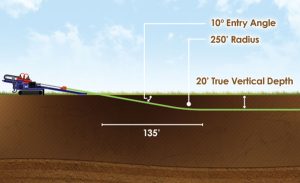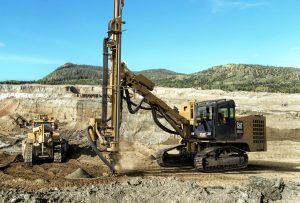What is Drilling at an Angle from Vertical Called?
Drilling is a fundamental process used in various industries, from construction to mining and oil exploration. While most people are familiar with drilling in a vertical direction, there are instances when drilling at an angle from the vertical becomes necessary. This article explores the concept of drilling at an angle from vertical and what it is called in the world of drilling.
Understanding Drilling at an Angle from Vertical
Drilling is the process of creating holes in a material or the Earth’s surface using a drilling tool, typically a drill bit. In most cases, drilling is performed vertically, meaning the hole is created perpendicular to the surface. However, there are situations where drilling at an angle from vertical is essential due to specific project requirements.
What is Drilling at an Angle Called?
When drilling at an angle from the vertical, it is referred to as “angled drilling” or “directional drilling.” This technique allows drilling professionals to deviate from the standard vertical approach to reach a specific target or navigate obstacles below the surface. Angled drilling is used in a variety of industries for diverse applications.

Applications of Angled Drilling
1. Oil and Gas Industry:
In the oil and gas industry, directional drilling is a common practice. It is used to access reservoirs of oil or gas that are not easily reachable with a vertical well. Directional drilling allows for the extraction of resources from multiple angles and depths.
It is also employed to intersect existing wells, control blowouts, or avoid geological hazards.
2. Construction:
In construction, angled drilling is used for various purposes, including installing utility pipes and cables beneath roads, railways, or buildings.
It is also utilized when creating foundations for structures on sloped terrain or when avoiding underground obstacles.
3. Mining:
In mining operations, angled drilling is employed to access ore bodies located at different angles or depths within the Earth.
It is essential for optimizing resource extraction while minimizing environmental impact.
4. Geotechnical Engineering:
Geotechnical engineers use angled drilling to gather soil and rock samples at various depths and angles to assess the stability of the ground for construction projects.
Techniques for Angled Drilling
There are several techniques and tools used in angled drilling, depending on the specific requirements of the project:
1. Slant Drilling:
Slant drilling involves creating holes that are inclined at a specific angle from vertical. This technique is commonly used in construction and geotechnical engineering.
2. Horizontal Directional Drilling (HDD):
HDD is a technique used in the installation of underground utilities, such as water and sewer lines, without disturbing the surface above. It allows for precise drilling at various angles beneath obstacles like roads and rivers.
3. Directional Boring:
Directional boring is similar to HDD but is typically used for longer distances. It is essential for creating underground pathways for utilities while minimizing disruption.
Advantages of Angled Drilling
Angled drilling offers several advantages over traditional vertical drilling:

1. Access to Inaccessible Resources:
It allows access to resources that cannot be reached with vertical drilling, such as oil and gas reserves located beneath the ocean floor.
2. Minimizes Surface Disruption:
Angled drilling minimizes disruption on the surface, making it ideal for urban areas or environmentally sensitive locations.
3. Increased Efficiency:
In mining and geotechnical applications, angled drilling can significantly increase efficiency by providing access to multiple points of interest from a single borehole.
4. Safety:
In the oil and gas industry, directional drilling can be used to control and mitigate well blowouts, enhancing safety measures.
Conclusion
Drilling at an angle from vertical, known as angled or directional drilling, is a versatile technique used in various industries to access resources, navigate obstacles, and minimize surface disruption. Whether it’s extracting oil from beneath the ocean floor, installing utilities beneath city streets, or assessing geological stability for construction projects, angled drilling plays a crucial role in modern engineering and resource extraction.
As technology continues to advance, so does the precision and efficiency of angled drilling techniques, making it an essential tool for industries that rely on accessing the subsurface world while minimizing environmental impact. Understanding the concept of drilling at an angle from vertical is crucial for professionals in these fields, as it enables them to tackle complex challenges and achieve project goals effectively. Read more about it here.

